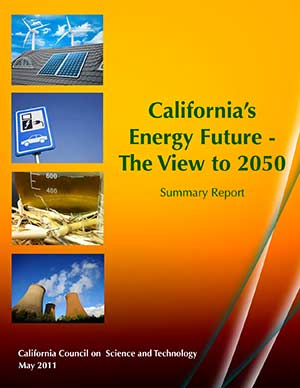California’s Energy Future: The View to 2050
Author(s): Long, Jane C.S.
Release Date: May 24, 2011 | Last Updated Date: February 19, 2015
Abstract
“California’s Energy Future – The View to 2050” looks a generation ahead at what’s required to reach that goal and answers the call of S-3-05, the executive order from 2005 to reduce the state’s emissions 80 percent below the 1990 level by 2050. The good news: The technology to do more with less energy and produce the electricity and fuel we need to get to the 60 percent mark is either in demonstration, or already in use. Pushing on to a full 80 percent reduction in emissions will require significant levels of research, development, invention and innovation, the report states. The total commitment necessary to achieve this accelerated pace will require strong societal and policy backing because there are less than 40 years to make a nearly total change-over to the required technology. Essentially, in this time period, every existing building will either be retrofit to higher efficiency standards or replaced, 60 percent of light-duty vehicles will use electricity, so that the average fuel economy will be roughly 70 miles per gallon. Additionally, the electricity generating capacity of the state will be almost entirely replaced and then doubled, and all with near zero-emission technology. Meanwhile, infrastructure to produce biofuels – costing tens of billions of dollars – will have to be built, biofuel imports must become available, and fossil fuel use will have to decline dramatically.
The report’s conclusion strongly recommends the development of multiple solutions, making it clear that no single approach will take the state to a future nearly free of fossil fuel emissions. Getting to the 60 percent mark, on technology either at commercial scale or in development, can be accomplished through four key strategies:
- Aggressive efficiency measures for buildings, industry and transportation to reduce the need for both electricity and fuel.
- Electrification of transportation and heat wherever technically feasible to avoid fossil fuel use as much as possible.
- Developing emission-free electricity production with some combination of renewable energy, nuclear power and fossil fuel accompanied by underground storage of the carbon dioxide emissions, while at the same time nearly doubling electricity production.
- Finding supplies of low-carbon fuel to supply transportation and heat use which cannot be electrified, such as for airplanes and heavy duty trucks, and high quality heat in industry.







